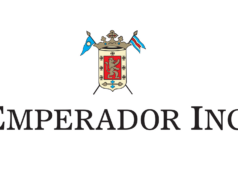SCIENCE CITY OF MUÑOZ – For centuries, the carabao has been harnessed as the mainstay in farm works – tractable and uncomplaining as it cultivates the land, friendly as it is used for travel and hauling of commodities, and as star in cultural events.
But it suffered neglect in terms of its breed and nutritional needs and even on its health care. Its population diminished due to diseases and its adults were massacred during the war for suspicion as being used to move guns, ammunition and food by the American and Filipino soldiers.
Its breed deteriorated causing it to become smaller and lesser in body weight.
However, due to the passage of the Carabao Law (RA 7307) which was meant to “propagate and promote the Philippine carabao and other purposes, and improve its breed for other purposes,” the fate of the publicly recognized national animal has been reversed.
It has been crossbred with the dairy type of water buff alo and has become a source of milk, meat, and draft power. In other words, a “three-in-one carabao.”
Last March 27, which was the Silver Anniversary of the Philippine Carabao Center (PCC) here, its newly minted breed, called the “Philippine Dairy Carabao”, was launched. It is the product of crossbreeding between the native carabao and the dairy-type of water buffalo and subsequent series of backcrossing.
Crossbreeding, backcrossing
Dr. Arnel del Barrio, PCC executive director, said the launched Philippine-bred dairy carabao is very adaptable to hot, humid tropical condition, with good fertility and reproductive performance, and is possible for calving every year.
“From pure swamp type, it is more beneficial in terms of being a work animal, milk giver, and is meatier,” he said. “It is also bigger and heavier than the native carabao.”
This developed new breed is with 93.75 percent riverine water buffalo blood. It took four generations, with at least four years each generation, to produce it.
The native carabao’s average dairy milk yield is 1.5 to two liters per day and the crossbred at five to six liters a day for 10 months. This new breed can yield higher milk yield every day for ten months of lactation, with peaks yield of 15 liters a day or more for a number of weeks.
Only less than 10 countries in the world have developed their own breed of dairy water buffalo. The blood of their breed is reportedly from the “Murrah breed” which is mostly from India.
Explaining further, Del Barrio said there are two important breeds of water buffalo known in the world. The first one is the riverine-type, which is good for dairying and for meat production, and the other the swamptype which is noted for its draft power.
It was the swamp-type that was brought in by the early migrants in the country several centuries ago and was harnessed much for the production of foods from agricultural pursuits. It earned its distinct name as “carabao” in the country.
Of late, much of the works done on the farm with the help of the carabao, are taken over by farm machines. “Although they are of different chromosomal properties, the swamptype and riverine-type are fit for crossbreeding. That’s what the PCC scientists did,” Del Barrio said.
The wonders of breeding
The PCC, in keeping with the goal of the Carabao Development Program (CDP), took initiatives to undertake the tedious and challenging efforts of the crossbreeding and backcrossing of the native carabao with the riverine-type.
Along this line, imported purebred (riverine) buffaloes are either mated with native (swamp) buff aloes or become semen donors for artificial insemination. The resulting off-spring are crossbred carabaos, bigger, meatier, and several litters more of milk yield than the native carabaos.
Dr. Ester Flores, National Genetic Improvement Coordinator and geneticist of PCC, said the native buffalo can only produce an average of one to two liters of milk a day, while the purebred riverine buffalo can produce much, much more which can be sources of income as well as nutritional needs of their families.
The process When the program started years ago, Flores said the process used was inter-se mating (among or between themselves). In other words, the acclimatized F1 females are mated with F1 males of the same breed. The performance of the different filial generations (F1, F2, etc.) are then studied, according to Flores.
She explained that the end-result of interse mating is a crossbred buffalo with 50 percent riverine blood and 50 percent swamp blood.
To illustrate, Flores explained that in inter-se mating, a purebred bull is mated with a native cow to produce a crossbred cow. The resulting off spring is called the first filial generation (F1) with 50 percent riverine blood and 50 percent swamp blood.
To achieve the second filial generation (F2), an F1 cow is mated with an F1 bull. Their off spring will still be 50 percent riverine and 50 percent swamp. Then, to achieve the third filial generation (F3), an F2 cow is mated with an F2 bull that results in the production of off spring which again have 50 percent riverine and 50 percent swamp blood.
The fourth filial generation (F4), Flores said, achieves 93.75 percent riverine blood and the rest from the native carabao. She further said that further improvement on the “Philippine Dairy Carabao” will continue.
At the moment, she said, three bulls which are in their fourth filial generation were entrusted to three farmers in San Agustin, Isabela, the town unofficially as the crossbred capital of the country, to be used for mating quality crossbreds in their respective areas.
More funds for livestock
Senator Cynthia Villar, chair of the Senate committee on agriculture and food, vowed in her speech during the PCC anniversary program to work for the passage of a law that will provide big fund for livestock, poultry and dairy.
“I will push for the passage of a ‘Livestock, Poultry and Dairy Law’ that will provide more funds, particularly, to these three sources of food,” Villar said. “As it is today, there is too much bias on rice and other crops production, with a share in the agriculture department’s budget of 40 percent but very small percentage only for livestock, poultry and dairy,” she added.
Of the P107 billion DA budget, only P1.4 billion allocation is for the livestock, poultry and dairy.
“With the passage of my proposed law, about one-third will go for the funding of livestock, poultry and dairy concerns,” Villar said.





